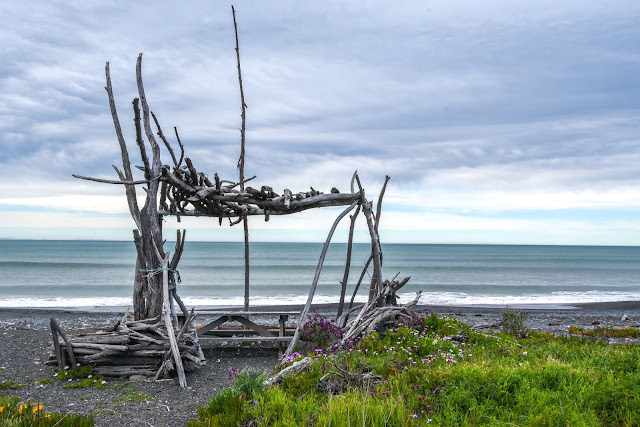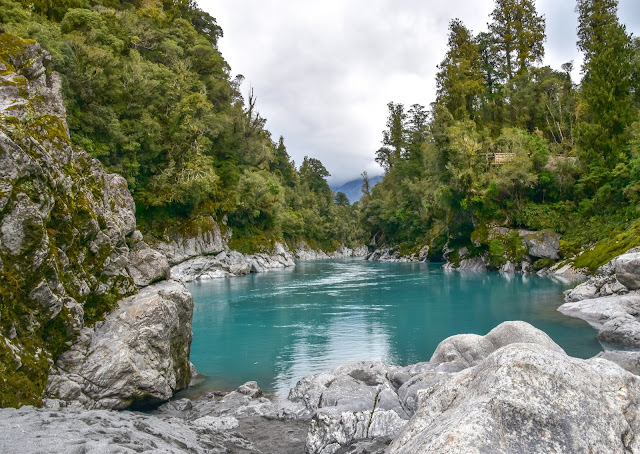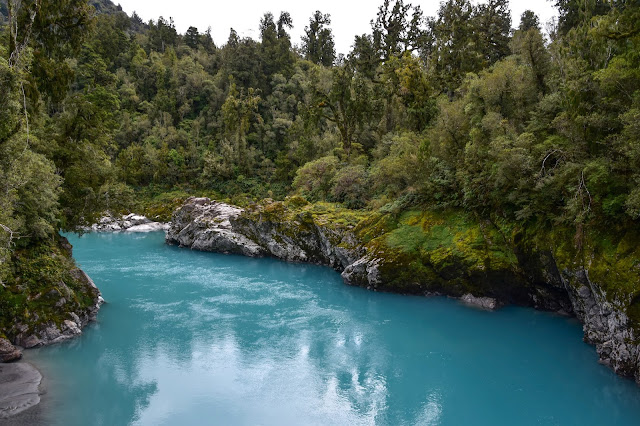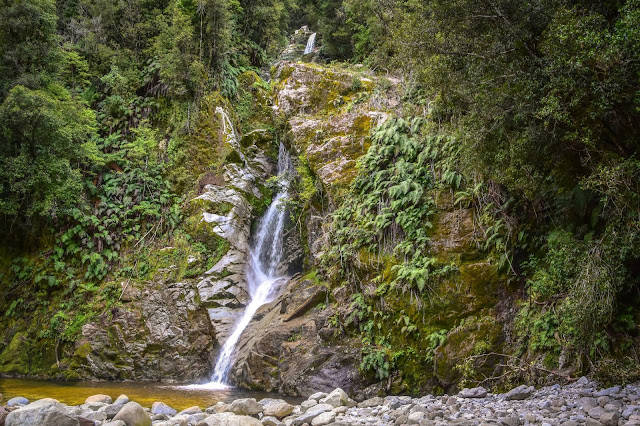Located about half an hour inland from Hokitika is Lake Kaniere, also known as one of the most beautiful lakes in New Zealand. Surrounded on three sides by mountains and native forest, this glacial lake is almost 200 metres deep in places! Can you imagine how big the eels would be in a lake that deep?
Lake Kaniere Reserve offers several walks ranging in length and is popular for camping, mountain biking, bird-watching, swimming, water-skiing, jetboating, and other outdoor activities.
The first walk I took was the 'Canoe Cove' walk. It's an easy track and easy to find. As you drive along the eastern side of the lake, it's the first walk on the right. The track goes through a rimu and kahikatea forest to a sheltered inlet.
Near the start of the walk are a couple of boardwalks over shallow, tea-coloured water. There's wire mesh covering the boards to provide grip ... the walkways must get pretty slippery at times.
I find it so uplifting walking in the bush - It's as though a weight gets lifted from my shoulders. There's no traffic noise, no hustle and bustle, just a feeling of peacefulness. The only sound was bird song, the air was filled with an earthy fragrance, towering native trees filtered the sunlight, and all around, plant life was thriving. Bliss.
 |
| Nature's artwork |
At the end of the track, was a small sandy beach that curves around to an inlet. The lake was full when I visited so there wasn't much room between the water and bush but I managed to skirt around the edges without getting my feet wet.
Across the water, I spotted a rope hanging from one of the branches over the lake. Oh my goodness wouldn't that be so much fun in summer? If you click on the photo below (to enlarge it) you'll see the rope to the left.
Although it's only a short walk, it took me much longer than the suggested 15 minutes each way. I stopped a lot! - to look at fungi, to poke spongy, mounds of moss, to take photos, and to soak in all the beauty around me.
 |
| Bracket Fungi |
 |
| Koru - the beginning of life |
After that wee predicament, I continued along the road to Hans Bay, which is a small settlement of about 50 houses. Most of the houses are holiday homes with views across the lake.
Between the road and lake is a grassy area, the perfect place for a picnic and it's here that you'll find the boat ramp and a jetty for those who want to try their luck fishing.
Also at Hans Bay is a DOC campground that's big enough for larger motorhomes/caravans, plus it has lakeside views. Unfortunately 'No Dogs' are permitted.
Leaving Hans Bay and continuing eastwards along the lake's edge, the road changes to gravel. It's well maintained, although a little narrow at times. A few kilometres further up the road are the Dorothy Falls.
Dorothy Falls can easily be seen from the road - once over a little bridge, there's an area to park. It's a very short one-minute walk to the bottom of the falls, it'd be an ideal spot to cool off on hot summer days.
After taking a few photos, I jumped in the car and drove back the way I'd come. There's a fork in the road at the northern end of the lake. The road to the left travels along the western side of the lake, while the right turn leads to Hokitika. I decided to have a look along the west side of the lake. The road is called Sunny Bight Road and is about a kilometre long - it leads to the Sunny Bight picnic area which has views across the lake.
The next time I visit Lake Kaniere, I'll try to get there early morning, before there's any breeze. I'd love to see the reflections on a calm day.
A sign from the rest area indicated that a short distance along the road was the beginning of the Lake Kaniere Walkway. It's a four-hour walk around the western shore of the lake, which ends at the southern end of Lake Kaniere on Dorothy Falls Road. I'll do that walk another time. |
| The road leading to Lake Kaniere Walkway. |
Feeling recharged and rested, and with a camera full of photos, I headed back to Bernie and our two 4-legged kids.



























































